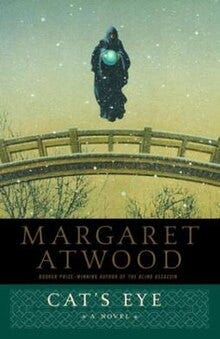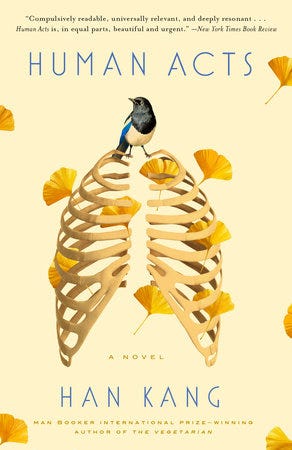Resisting Consolation
A trip to Portland, plus a dip into the backlists of Han Kang and Margaret Atwood
Just before the election, I had the honor of spending an intense and invigorating four days with roughly two dozen fellow fiction writers at the Tin House Autumn Workshop, hosted in the eponymous “tin” house on the corner of NW 26th and NW Thurman in Portland, Oregon. I met some wonderful people, including the four faculty—Gina María Balibrera, Jamel Brinkley, R.O. Kwon, and Kimberly King Parsons—who each gave a lecture and reading during our short time together. (Gina and R.O. also did particularly delightful karaoke renditions of “Kiss from a Rose” and “It’s the End of the World as We Know It,” respectively.) My workshop with Kimberly King Parsons was fantastic, and if you haven’t encountered her story collection Black Light or her new novel We Were the Universe, I strongly recommend both. She also gave an inspiring talk about channeling rejection into courage to write more authentically, that we begin to hone in on our audience when we recognize it’s not going to be everyone.

In the wake of the workshop and the election, I’ve been thinking a lot about Jamel Brinkley’s talk as well, which drew on blues traditions and the words of James Baldwin, Gayl Jones, and Richard Wright. He challenged us to go beyond merely writing attractive prose to more fully engage with the complexities and ambiguities inherent in the real trouble of living, that the voice that results may be less polished and smooth but richer and fuller, like the late Verve recordings of Billie Holliday versus her earlier work. Lately, I’ve been putting more books and stories aside without finishing them, despite their abundance of beautiful sentences, and I think this has something to do with a bent in a lot of contemporary literature toward consolation, toward fiction and art that avoids asking truly uncomfortable questions of itself or its readers. This might also be why I’ve been turning to some older books and older writers to find more fiction that is not only well-crafted but also, to use one of Jamel’s phrases, “breaks away from the inanity of simplicity.”
The two novels I have to share with you today, I think, fit that description quite well. By resisting consolation, I don’t mean there is no comfort at all to be found in reading these books. Maybe instead there is a deeper consolation to be found in their honesty about the darkness that does exist in the world and within the human soul, that they do not ignore or turn away from it. They live in the same world we do.
Human Acts by Han Kang, translated by Deborah Smith
“The national anthem rang out like a circular refrain, one verse clashing with another against the constant background of weeping, and you listened with bated breath to the subtle dissonance this created. As though this, faintly, might help you understand what the nation really was.”
If you are not already familiar with Han Kang’s work, you might recognize her name from her recent Nobel Prize for Literature. Human Acts is one of her older books, first published in 2014, and focuses on the 1980 Gwangju Uprising, a massacre of pro-democracy demonstrators, many of whom were students, by the South Korean military dictator Chun Doo-hawn. In brief, this is a novel that uses an ingenious polyvocal structure to interrogate the horrific reality of state violence and how to continue to act as a human being in the face of such violence.
Human Acts is especially concerned with questions of how to mourn and remember the dead, all the more so when the dead have been so dehumanized not only in the act of killing but in the way the bodies are handled after death by the killers. In the opening section, a middle school-aged boy, Dong Ho is dissuaded from going to try to recover the body of his friend who is killed in the massacre because he sees others who try to do this immediately shot, yet he is haunted by his actions, or rather failure to act. The second section is narrated by his friend who has been killed, and each subsequent chapter moves forward in time, approaching the present in leaps and bounds, each focusing on a different character, all of whom are linked to the massacre and as a result to each other. I found the final section, where Han breaks the fourth wall and incorporates a version of the writer as a character in the book (a little like what Kurt Vonnegut does in with his meta first chapter of Slaughterhouse-Five), the most powerful and unexpected of them all.
If you’re interested in learning more about this book and Han’s body of work more broadly, this essay by Yung In Chae in the Yale Review offers a deeper dive with additional historical and cultural context.

“This is the kind we like best. They have a certain gaiety to them, a power of invention, they don’t care what people think. They have escaped, though what it is they’ve escaped from isn’t clear to us. We think that their bizarre costumes, their verbal tics, are chosen, and that when the time comes we also will be free to choose.”
First, let me say that I think the very best possible introduction to Margaret Atwood (if by some wild chance you have yet to have been introduced to at least one of her FIFTY-PLUS—count ‘em—published works of fiction, poetry, criticism, etc.) can be found in Rebecca Makkai’s New York Times review of Atwood’s most recent collection Old Babes in the Wood. Makkai writes, “This is Atwood. This is our four-faced Janus, who’s got one face turned to the past, one to the present, one to the future, and the fourth inside a spaceship, telling stories about eating horses. Long may she reign.”
I have now read (I think) just barely enough of Atwood’s work to appreciate how spot-on this description is for a writer with her range; one of Atwood’s core subjects (if not her core subject, though I dare not speak too assertively having only read three of her novels) is time. Cat’s Eye is far more autobiographical than most of her work, and firmly realist. The protagonist, Elaine Risley, is a middle-aged artist who returns to Toronto for a retrospective show of her work and finds herself searching for and reckoning with her complex relationship with a woman named Cordelia, who was her closest childhood friend and tormentor.
This description, however, does not do the book justice. It’s a book about so many things: the relationship between the raw material of an artist’s life and the subject of their art (and the limitations of one’s own understanding of this relationship), the extent to which we can know ourselves and each other, the way identities shift and accumulate over time, what one human being owes another, the many shades and textures of human cruelty, what it means to be both a victim and perpetrator, and, yes, the nature of time. Atwood’s sentences are surgical instruments, elegantly engineered and highly practical, dangerously sharp in their precision. What she does with the reader’s experience of memory and time in relation to Elaine’s experience is downright astounding from a craft perspective as well, and expanded my sense of what is possible to do within the space of a single novel.
All of this to say, whatever your feelings are about any past encounters with Atwood’s work, consider checking out Cat’s Eye.
While there’s a lot more I could say about my trip to Portland, this post has already gotten on the long side, so I’ll just add that another highlight was the Portland Book Festival last Saturday, where I got a firsthand glimpse of Portland’s incredibly vibrant literary scene. I’ve never seen so many readers and writers gathered in once place aside from AWP, but this had a different kind of life to it. AWP is more of an academic/professional conference, and this was a conference more oriented toward readers. On top of that, it was so well-attended that some events had lines down the block, and in some cases, they had to turn people away because they ran out of seats. I went to a workshop early in the morning facilitated by Olufunke Grace Bankole about the multi-voice novel that was so packed people were lining the walls and sitting on the floor. Reading and writing so often feel like isolated, solitary acts, and this gave me a much needed reminder of my membership in a much larger community of readers and writers that is not often so physically visible and therefore can be underestimated.
I’ll end with a quote from James Baldwin that I kept laminated and posted outside of my classroom for the years I was teaching: “You think your pain and your heartbreak are unprecedented in the history of the world, but then you read. It was books that taught me that the things that tormented me most were the very things that connected me with all the people who were alive, who had ever been alive.”"
Thanks for reading with me,
Jules



Loved this so much! Such a pleasure to read your reflections on tin house Jules 😊